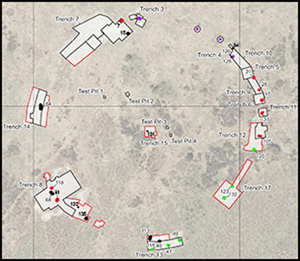Article contents
How Waun Mawn stone circle was designed and built, and when the Bluestones arrived at Stonehenge: a response to Darvill
Published online by Cambridge University Press: 04 November 2022
Abstract

In response to Timothy Darvill's article, ‘Mythical rings?’ (this issue), which argues for an alternative interpretation of Waun Mawn circle and its relationship with Stonehenge, Parker Pearson and colleagues report new evidence from the Welsh site and elaborate on aspects of their original argument. The discovery of a hearth at the centre of the circle, as well as further features around its circumference, reinforces the authors’ original interpretation. The authors explore the evidence for the construction sequence, which was abandoned before the completion of the monument. Contesting Darvill's argument that the Aubrey Holes at Stonehenge originally held posts, the authors reassert their interpretation of this circle of cut features as Bluestone settings.
Keywords
- Type
- Debate
- Information
- Copyright
- Copyright © The Author(s), 2022. Published by Cambridge University Press on behalf of Antiquity Publications Ltd.
References
- 3
- Cited by




